Japan has been preventing an explosive outbreak of COVID-19 by focusing on avoiding the so-called “Three Cs” (closed spaces, crowded places, and close-contact settings), key findings of its unique approach of tracking back infection routes, while seeking to revive the economy without locking down.
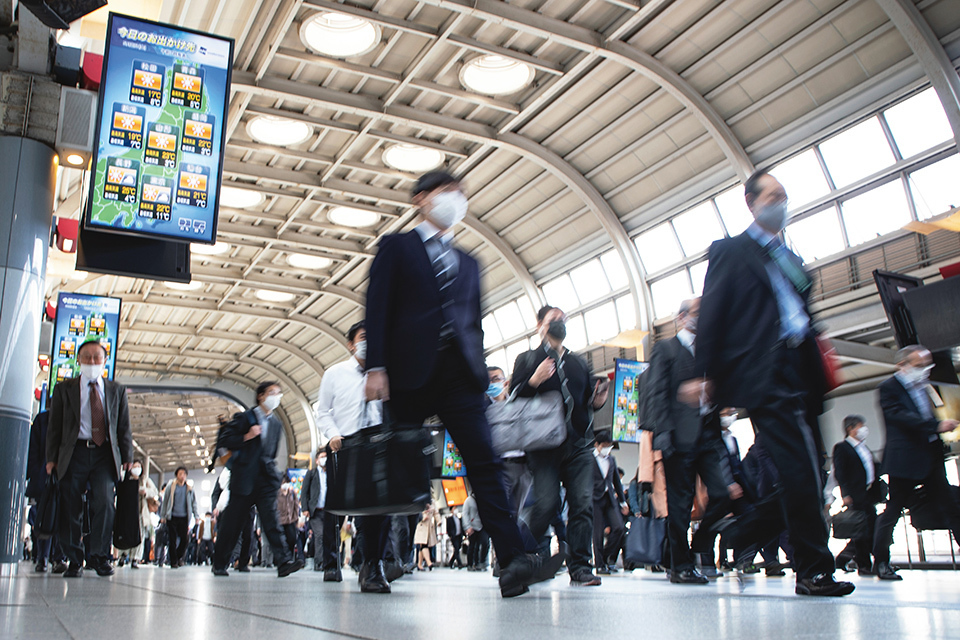
Wearing masks and washing hands, which are effective means of preventing the spread of COVID-19, have been customary in Japan since before the pandemic.
As the long fight against COVID-19 continues, Prime Minister SUGA Yoshihide, in his first policy speech, stated that the Japanese government would do everything it could to continue preventing an explosive outbreak and thoroughly protect the lives and health of the public. He also spoke about advancing the recovery of the economy through the resumption of socioeconomic activities.
Since the early stages of the COVID-19 pandemic in 2020, the Japanese government has taken a so-called “cluster-based approach,” which has focused on finding the source of infection clusters (outbreaks) in order to prevent large-scale spread. That approach was adopted because the public health authority discovered early on that much of the transmission of the virus that causes COVID-19 is propagated by an exceedingly small proportion of people carrying it. By tracking past activities of multiple patients so as to identify the common sources of infections, and exhaustively surveying and monitoring close contacts associated with those sources, further spread of infections can be minimized and delayed.
At the end of February, the Ministry of Health, Labour and Welfare established the Cluster-Response Task Force comprising of experts on infectious diseases in Japan to develop and implement the cluster-based approach. Working with local governments where clusters had arisen, the task force gathered and analyzed data for use in planning how to combat the pandemic. At the frontline, municipal health centers carried out not only “prospective tracing,” which aims to identify close contacts of patients to prevent further spread, but also “retrospective tracing,” which surveys patients’ behavioral histories by conducting thorough interviews.
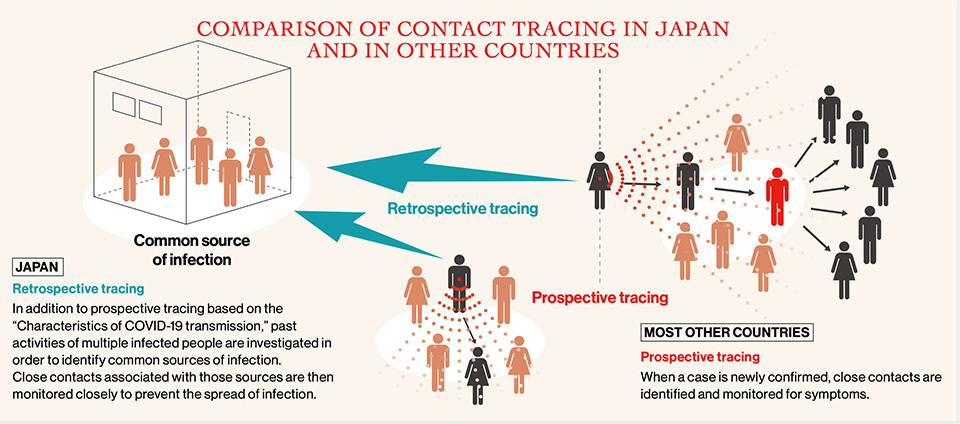
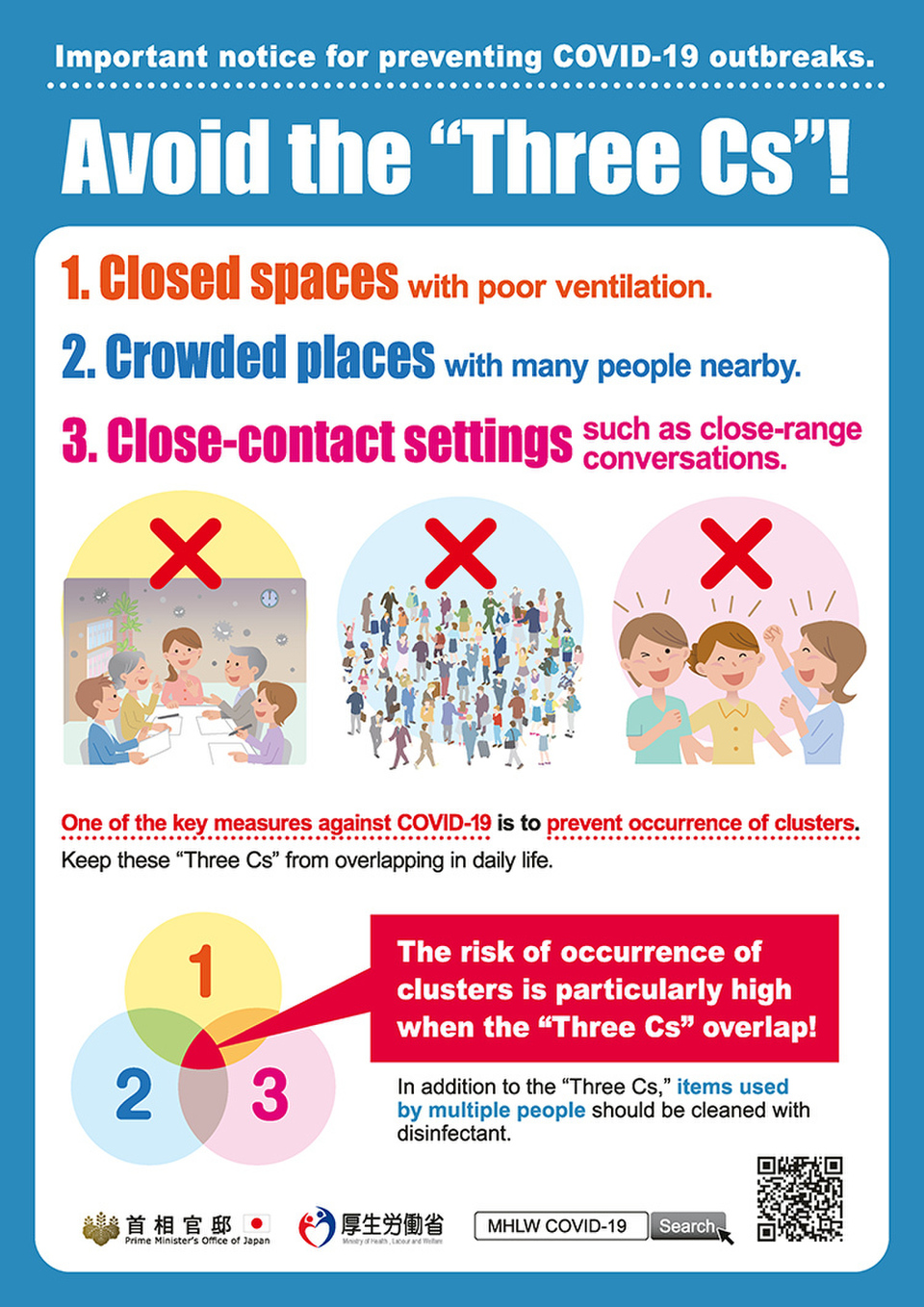
The Japanese government has urged the public to avoid the Three Cs. A key finding of the government’s retrospective tracing approach is that these three conditions facilitate transmission of the virus.
“One of our focuses has been retrospective contact tracing, which tracks past activities of infected people to discover possible sources of infection and thereby identify clusters,” SAITO Tomoya, director of the Department of Health Crisis Management at the National Institute of Public Health, recalls. “This investigation revealed that the ‘Three Cs’ (closed spaces, crowded places, and close-contact settings) are the major risk factors that could lead to the occurrence of clusters.”
Since this finding, the Japanese public has been repeatedly reminded to avoid places and situations where these three conditions overlap. By declaring a state of emergency in April and May and calling on the public to voluntarily refrain from leaving the home unnecessarily, the government successfully encouraged the wider public to avoid the Three Cs. Later on, the World Health Organization (WHO) began circulating a global message through social media encouraging people to avoid the same Three Cs.
Another notable tool for stopping the spread of COVID-19 is the wearing of masks. Fugaku, the Japanese supercomputer that has taken the top spot in two consecutive global performance rankings, has run simulations of the effectiveness of face masks and of how airborne droplets spread in high-risk places and situations such as restaurants and elsewhere. Publicly released findings of the research show that wearing a mask can significantly mitigate the danger posed by these high-risk settings. In Japan, hygienic practices such as wearing masks and washing hands, which are effective means of preventing infections from spreading, were customary prior to the pandemic, allowing Japanese society to smoothly adjust to life under the “new normal.”
The fight against COVID-19 is not yet over. In the meantime, Japan will continue to take the necessary steps to combat the pandemic, striking a balance between preventing the spread of the infection on the one hand and keeping the economy going on the other.
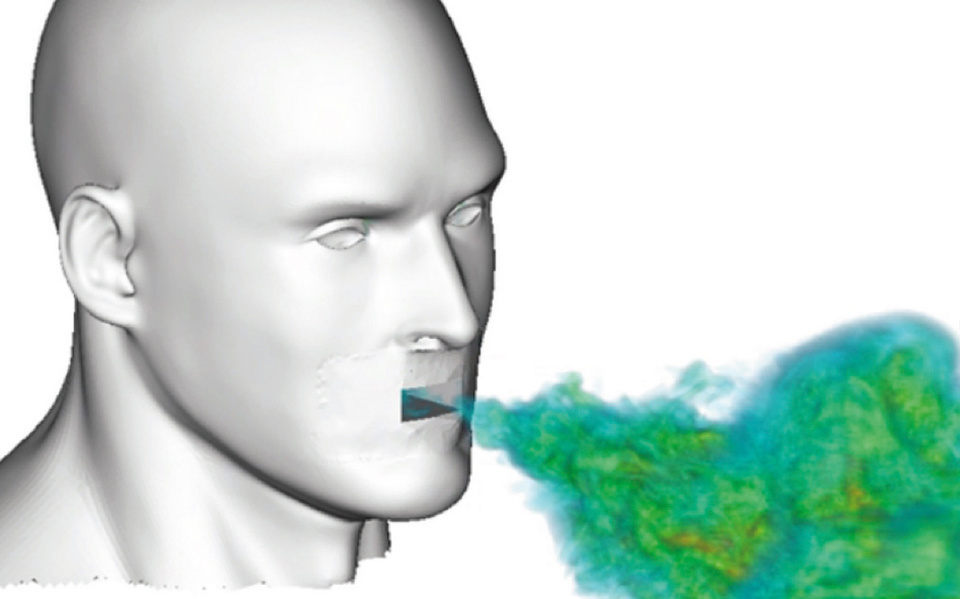
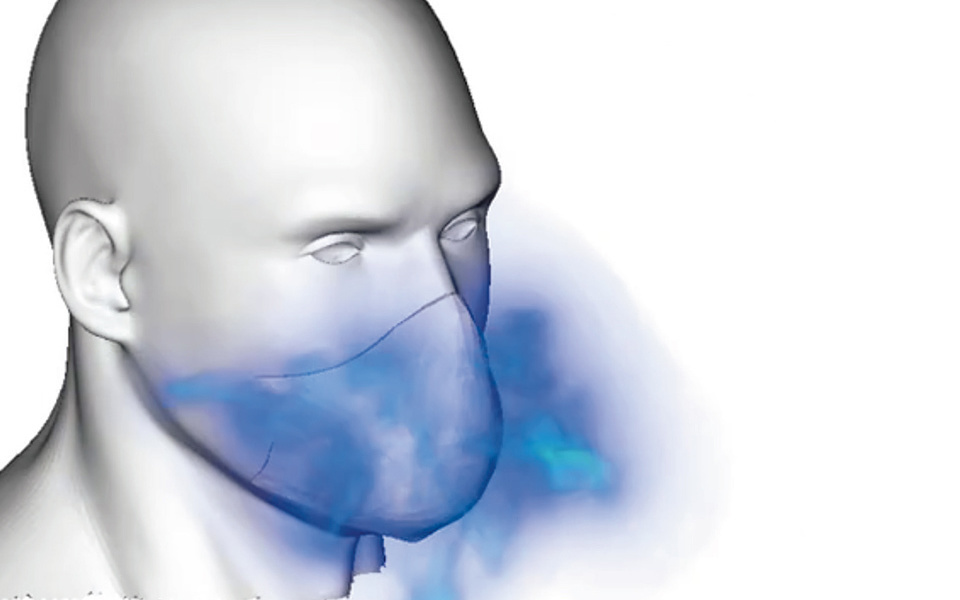
The simulation using supercomputer Fugaku shows that not wearing a mask (left) fails to suppress the extent to which airborne droplets are spread during actions such as coughing compared to when wearing one (right).






























